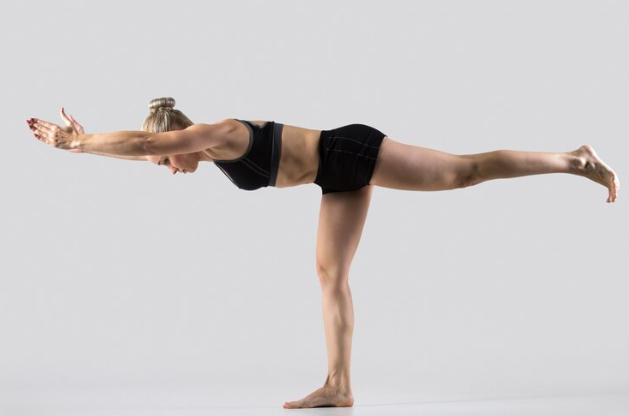Yoga is a powerful practice that can significantly enhance physical, mental, and emotional well-being. For women, yoga can offer a range of benefits, from hormonal balance and stress relief to increased strength and flexibility. Here’s a comprehensive guide to empowering yoga practices that help women achieve balance and wellness.
Benefits of Yoga for Women
- Physical Strength and Flexibility:
- Enhances muscle tone and flexibility.
- Improves posture and reduces the risk of injuries.
- Supports joint health and increases range of motion.
- Hormonal Balance:
- Helps regulate menstrual cycles and reduce PMS symptoms.
- Eases menopausal symptoms like hot flashes and mood swings.
- Supports reproductive health.
- Mental Clarity and Emotional Balance:
- Reduces stress and anxiety.
- Improves focus, concentration, and mental clarity.
- Promotes emotional stability and resilience.
- Overall Well-being:
- Boosts energy levels and combats fatigue.
- Enhances sleep quality.
- Promotes a sense of peace and inner calm.
Empowering Yoga Poses for Women
1. Mountain Pose (Tadasana):
- Benefits: Improves posture, strengthens legs, and enhances focus.
- How to: Stand with feet together, arms at sides. Engage thigh muscles, lift chest, and reach arms overhead with palms facing each other. Hold for a few breaths.
2. Warrior II (Virabhadrasana II):
- Benefits: Builds leg strength, opens hips, and increases stamina.
- How to: Step one foot back, bend the front knee, and extend arms parallel to the ground. Gaze over the front hand. Hold for several breaths, then switch sides.
3. Triangle Pose (Trikonasana):
- Benefits: Stretches the sides of the body, improves digestion, and relieves back pain.
- How to: Stand with feet wide apart, turn one foot out, and extend arms out to the sides. Reach forward and down to touch the shin or the floor, extending the other arm upwards. Hold and then switch sides.
4. Cat-Cow Pose (Marjaryasana-Bitilasana):
- Benefits: Promotes spinal flexibility, massages internal organs, and reduces stress.
- How to: On hands and knees, inhale to arch the back (Cow Pose), and exhale to round the spine (Cat Pose). Flow between these poses for several breaths.
5. Bridge Pose (Setu Bandhasana):
- Benefits: Strengthens the back, glutes, and legs, and stimulates the thyroid.
- How to: Lie on your back, bend knees with feet on the floor, and lift hips towards the ceiling. Clasp hands underneath the body. Hold for several breaths.
6. Child’s Pose (Balasana):
- Benefits: Relieves stress and fatigue, gently stretches hips and thighs.
- How to: Kneel on the floor, sit back on the heels, and stretch arms forward while lowering the forehead to the ground. Hold for several breaths.
7. Reclining Bound Angle Pose (Supta Baddha Konasana):
- Benefits: Opens the hips, relaxes the mind, and alleviates menstrual discomfort.
- How to: Lie on your back, bring the soles of the feet together, and let the knees fall open. Place hands on the belly or extend them to the sides. Hold for several minutes.
Creating a Balanced Yoga Practice
1. Set an Intention:
- Begin each session by setting a personal intention or goal.
- Focus on what you want to achieve, whether it’s relaxation, strength, or mental clarity.
2. Warm-Up:
- Start with gentle stretches and warm-up poses to prepare the body.
- Incorporate movements that increase circulation and flexibility.
3. Mix of Poses:
- Combine standing, seated, and reclining poses to target different areas of the body.
- Include both dynamic flows and static holds.
4. Breath Awareness:
- Practice deep, mindful breathing throughout your session.
- Use breath to enhance relaxation and deepen stretches.
5. Cool Down and Relaxation:
- Finish with calming poses and stretches.
- Spend a few minutes in Savasana (Corpse Pose) to fully relax and integrate the practice.
6. Consistency:
- Aim to practice yoga regularly, even if it’s just a few minutes each day.
- Consistency helps build strength, flexibility, and mental clarity over time.
Additional Tips for Wellness
1. Mindful Eating:
- Choose nourishing foods that support your body’s needs.
- Practice mindful eating to enhance digestion and enjoyment of meals.
2. Hydration:
- Drink plenty of water throughout the day to stay hydrated.
3. Rest and Recovery:
- Ensure you get adequate sleep and rest to allow your body to recover.
4. Mental Health:
- Incorporate mindfulness practices like meditation and journaling to support mental and emotional health.
5. Community:
- Join yoga classes or groups to connect with like-minded individuals.
- Share your journey and support others in theirs.
By integrating these empowering yoga practices and wellness tips into your daily routine, you can achieve a balanced, healthy, and fulfilling life. Yoga not only strengthens the body but also nurtures the mind and spirit, offering a holistic approach to well-being.



